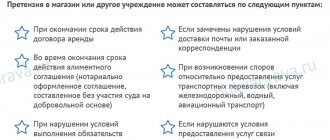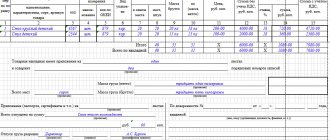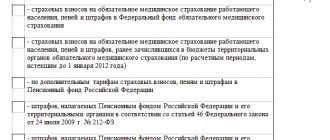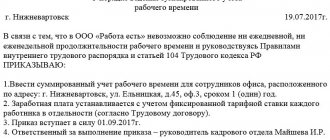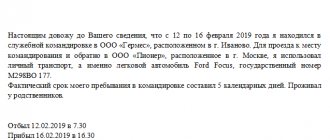Types and grounds for returning goods
Depending on the reasons for returning the goods, it may mean:
- Return due to violation of the terms of the contract (inadequate quality or quantity not corresponding to the terms of the contract, incompleteness). Such return may take place both before acceptance and transfer of ownership, and after.
- Return of high-quality and complete goods, if the buyer is granted such a right by contract or law.
In turn, both of these types of return do not always mean termination of the contract for the future. It all depends on the agreements of the parties; the transfer of goods can simply be postponed. Such agreements must be formalized by additional agreements on postponing the transfer date.
To avoid misunderstandings with counterparties, you should distinguish between:
- replacement (return of the goods and the requirement to transfer in fulfillment of the obligation the same, but complete or of proper quality);
- return without a requirement for replacement and accompanied by a refusal to pay or a demand for a refund of funds already paid (most often this means termination of the contract, but sometimes accompanies situations where more has been delivered than previously agreed and the buyer does not want to accept and pay for the excess).
The reasons for returning goods can be very different, therefore, in the act of returning goods, the supplier must indicate the following points: reasons for the return (indicating the article of law or contract allowing the return).
And those actions that are expected from the counterparty, indicating the norm of law or contract that allows them to be demanded (should he supply a high-quality or complete product instead of the returned one, or return the funds, or issue an invoice without taking into account the cost of the returned product).
https://youtu.be/IRKK2GOVW8Q
Content requirements
Due to the fact that unified primary documents are no longer required to be used, strict requirements for the form and content of the act of returning goods to the supplier have not been established . However, to serve not only accounting purposes, but also to protect the buyer from possible future litigation, it is advisable to include several mandatory clauses.
Mandatory details of the act are the name of the document, the place and date of its preparation. The act must reflect:
- names of the parties, positions, surnames, first names and patronymics of their representatives;
- name of the product, its quantity, assortment, basis for delivery;
- identified defects in the product due to which it cannot be used for its intended purpose, including for resale;
- the buyer’s refusal from the transaction, his obligation to return the goods and the requirement to return the funds paid to the supplier;
- the buyer’s agreement with the identified shortcomings, their impact on the impossibility of using the goods and the requirement to return part of the funds, as well as the seller’s guarantee to return the funds within the period specified in the act;
- agreement between the parties on who bears the costs of returning the goods.
Below you should indicate the number of copies in which the act was drawn up . It is usually prepared in four copies - one for each party, as well as for the carrier and claims specialists.
In order for the act to take the force of an accounting document, it must be signed by authorized representatives of the parties.
Only their managers can speak on behalf of a legal entity without a power of attorney, and individuals, including individual entrepreneurs, can only speak for themselves. In order for third parties to sign the act, it is necessary to provide them with the appropriate powers by issuing a power of attorney to perform certain actions.
Signing a document can be done in two ways:
- The first option - the most common - is that the positions of managers, their signatures and a transcript of the signatures are located at the bottom of the document.
- The second option assumes that only commission members representing both sides sign below. In this case, heads of organizations and individual entrepreneurs approve the act with their signatures at the very beginning of the document, immediately after the words “APPROVE”, provided for each party.
The signatures of managers or persons acting on the basis of a power of attorney are certified by a seal. The exceptions are individual entrepreneurs who do not use a seal in their activities, as well as organizations whose lack of a seal is provided for by their charters.
Return of goods after acceptance and transfer of ownership
Inadequate quality is not always discovered upon acceptance.
It happens that after the signing of the acceptance certificate and transfer of ownership, any defects are identified. Sometimes this is due to an imperfect acceptance procedure (especially for large batches), sometimes due to the specifics of defects that can only appear during use. The new owner in such a situation is protected by law, and this applies both to ordinary people making everyday transactions with the same people, and to entrepreneurs making transactions at their own peril and risk.
Not all violations of the contract give the buyer grounds to immediately return the goods. An unconditional basis for a return is the discovery of so-called significant defects.
The law contains certain criteria that make it possible to distinguish significant shortcomings from insignificant ones, but the list is open.
Signs of a significant deficiency:
- irremovability;
- inability to resolve without disproportionate expense or time;
- repetition (for example, periodic malfunctions of household appliances);
- the defect appears again after warranty repair.
The openness of the list is indicated by the word “other shortcomings” that the buyer considers significant. In such situations, in practice, the buyer’s mere confidence in the significance of the detected defect is not enough; the return may be considered unlawful if the seller proves in court that such a defect cannot be considered significant.
Three situations when there is no need to prove that the defects are significant when returning:
- Purchase of property by consumers for household needs (the basis for termination of the contract and return is any detected defect). The only exceptions are technically complex goods, the return period for which due to the presence of any defect is limited to 15 days, after which - only if the materiality is proven.
- The consumer returned a defective product and this fact was properly documented. The retailer, in turn, has an unconditional right to demand a replacement (Article 518 of the Civil Code of the Russian Federation), but the agreement between the retail organization and its supplier can provide for the right to return such goods and receive a refund of the money paid.
- The concluded contract expressly stipulates that the legal consequences of identifying any deficiencies are the supplier’s right to return.
A violation of the contract may also result in the incompleteness of the transferred property. Incompleteness may occur when selling technically complex products. It means the absence of certain components, the supply of which together with the main product is specified in the contract or provided for by law.
Finding it incomplete does not mean you have the right to immediately return it (at least not unless it is related to the consumer-retailer relationship). Art. 480 of the Civil Code of the Russian Federation introduces a kind of “claims procedure” - first, the buyer notifies the seller about the incompleteness and demands completion or a reduction in price. If the requirement is not fulfilled within the period that the buyer considers reasonable, the right to return arises.
Since the law is full of abstract and evaluative concepts, it is advisable to stipulate and record in writing when developing a contract:
- deadlines for sending various notifications, their form and who has the right to sign;
- the period within which it is necessary to respond to notifications and complaints.
If cooperation involves the use of certain agreed rules that differ from the norms of the Civil Code of the Russian Federation, set out the agreements in writing in the text of the concluded agreement.
Its functions and role
Thanks to the correct documentation, when product defects are identified, your company will be able to return the funds spent on the purchase of this product. In the event that a defect or defect is discovered, a list of defective units of goods must be attached to the return certificate.
In case of a preliminary agreement on the return of unsold goods, you will simply need to draw up an act signed by persons, representatives of the seller, supplier and a third independent specialist. It will need to list all items to be returned. This usually happens when selling goods that are seasonally specific. As an example, we can cite the New Year's assortment.
Drawing up a certificate of return of goods to the supplier
The legislation does not contain mandatory requirements for the content and procedure for signing such acts.
Defects in design can cost you losses. We draw up a sample act of returning goods to the supplier. Internet sites are replete with various forms of return acts, and their quality varies greatly. Our website also offers a form for the return of goods to the supplier, compiled by good specialists. The proposed form has been tested through numerous practical applications.
Even the most complete and comprehensive return certificate will not protect against an unscrupulous counterparty who ignores notifications of incompleteness or detected defects and evades signing the acts. But the protection of the buyer’s interests in such a situation is perfectly handled by the right to apply sanctions, enshrined in the contract, as well as the right to demand compensation for losses (including fees for storage in the buyer’s warehouse or a third-party organization) if the seller (supplier) did not pick up what is being returned on time.
The period during which the counterparty is obliged to pick up the goods is best established in the contract. For example, establish the number of days within which the seller is obliged to respond to the claim, and after it, if the goods have not been picked up and the return request has not been proven unlawful, in addition to losses in the form of storage costs, charge penalties.
Often disputes about refunds are not limited to correspondence between the parties, but are referred to the court for resolution. If the return certificate does not contain a detailed description of the identified deficiencies or an indication of the quantity of defective goods, problems may arise with proof.
Of course, internal documents can be presented as evidence (an inspection report by authorized employees of the purchasing organization, internal memos, etc.), but when assessing such, the court will take into account that the document was drawn up only by people who are more or less interested.
A good option (albeit costly) is to present a professional appraiser’s report or an expert’s opinion as evidence, but if the goods have already been transferred back to the seller (supplier), the opportunity is lost, but there is a possibility of him engaging an appraiser or expert at his own discretion. Whether it is necessary to carry out an examination or invite an appraiser, or whether to confine oneself to the return certificate and internal documents, the parties decide independently based on the current situation.
You cannot neglect a detailed description of the detected defects and an indication of the amount to be returned. How this is recorded depends on the specifics of the property to be returned and the size of the lot.
https://youtu.be/eCFQ0pBIjqA
The return certificate must contain:
- Title of the document;
- date of compilation;
- details (number and date of conclusion) of the agreement;
- names of the parties to the agreement;
- date of acceptance, if any;
- the date of discovery of circumstances giving the right to return;
- name, quantity and cost of the goods to be returned;
- an indication of the circumstances that make the return possible (which is reflected in the non-compliance of what was delivered with the terms of the contract and the norms of the law; if appropriate, detailed descriptions of the defects can be included in the attachments, which are also signed by both parties);
- an indication of the articles of law or contract giving the right to return the goods;
- Full name (with transcripts) and positions of the persons who signed the act, as well as the names and details of the documents granting them the appropriate powers;
- signatures of the indicated persons.
Some data is not needed in all cases, but only when the situation requires it. For example, the law requires a prior claim, as in the case of bundling. In the future, it is expected to recover damages associated with payment for storage or there are fears that the supplier will try to prove damage to the goods due to improper storage conditions.
In such cases, it is advisable to indicate:
- Was a claim (notification) sent due to non-compliance of performance under the contract with its terms (when it was sent, how the counterparty responded).
- The period of responsible storage of the goods by the buyer (third parties involved by him) and the conditions of such storage.
- The condition of the container and packaging at the time of delivery of the goods.
- Consequences agreed upon by the parties (for example, replacement, return of prepayment), preferably with a time frame for completing the relevant actions.
The features of drawing up a return act are not exhausted by the above, since it, in addition to its function of proof, is used as a primary accounting document.
It must contain information required by the Law “On Accounting”. The ideal option is for the organization to develop a standard act, approve it in its accounting policies, or develop a template and include it in the appendices to the agreement.
How to draw up an act for handing over products back to the supplier?
The return shipment of products is a fairly common event for customers and suppliers, since in practice there are many excuses for returning goods, other than poor quality or violations of agreements by one of the parties. For example, one of the delivery points may be the return of unclaimed goods. In this case, unsold seasonal items can be returned back to the wholesaler. However, even in such a situation, the basis for returning the goods must be indicated in the documentation.
There is no single form of transfer document established by law regarding the procedure for returning products that the seller could not sell in a timely manner, so the application can be drawn up in any form. However, in order to avoid disagreements between the parties, it is necessary to agree in advance on the form of the act of returning the goods and attach it to the original contract.
As a rule, the act is drawn up in the presence of both the supplier and the buyer, however, with the consent of the supplier, the document can be drawn up without it.
The document must reflect the following information:
- Date and numbering of the document;
- Contact information about the supplier and recipient;
- Link to the original contract for the supply of goods;
- The fact of discrepancies between the terms of the contract and the production batch (defects, incomplete components, etc.);
- FULL NAME. representatives of both parties and their personal signatures.
Also, instead of the above-mentioned document, an act of the unified form TORG-2 is often used (approved by the State Committee of the Russian Federation on December 25, 1998 in Resolution No. 132; for import shipments of goods - TORG-3). In the “Grounds” column, the party making the claim indicates the reason for the return and signs the data from the document that confirms the basis for the return, for example, the presence of a defect in the product.
The absence of such documentation equates the return of goods to a purchase and sale transaction between two parties in the opposite direction. In this case, the tax authorities oblige the supplier and the customer to fulfill all the conditions of resale, which imply the charging of VAT and the organization making a profit from the resale of a batch of products.
How to return goods and money?
Read about how to return expired goods here.
How to return uncomfortable shoes, read the link:
Why do you need an act for the return of low-quality goods to the supplier from the buyer?
The act of returning goods is a procedural document that records the fact of the return transfer of products from the buyer to the supplier in cases provided for by contract or law. Accordingly, it is the only document that, if necessary, can confirm the fact of return and the reasons for such a step.
The act is drawn up by representatives of the parties. These can be both company managers, whose powers are determined on the basis of the charter, and other company employees, whose powers are confirmed by a power of attorney.
You should also know that items can be returned to the seller outside of the business relationship. You can read about consumer rights when returning goods in our article posted here.
You can find more complete information on the topic in ConsultantPlus. Full and free access to the system for 2 days.
Product return form
Sample form for returning goods
The buyer has the opportunity to refuse the goods he purchased if he is dissatisfied with the purchase. This situation may arise if the product does not fit in size, color, or has any flaws. In this case, the seller needs to return the money received for the products sold. If it is necessary to return the product, a product return form from the buyer is filled out, a sample of which can be downloaded from the link provided below.
Return Policy
Return of goods by the buyer is carried out upon presentation:
- the actual product with preserved physical properties, labels present, not in use, in undamaged packaging;
- warranty card (if available);
- a document confirming your identity (it can be a passport, driver’s license);
- a sales receipt or other document punched at the checkout that can confirm the purchase of the goods in the store and its full payment (in the absence of a fiscal document, the purchase of the goods can be confirmed by a witness; in chain stores the receipt can be printed again, since they are saved in the database);
- applications for refund of funds paid.
Products of inadequate quality can be returned by the buyer if the warranty period (expiration date) is not missed, and if it is not established - within 2 years from the date of purchase. Please note that the legislation provides for the possibility of returning technically complex goods (the list is approved by the legislation of the Russian Federation) only within 15 days following the day of transfer of the goods.
Registration of a product return form
The seller may offer a filler form for the return of goods by the buyer. In the absence of a form, the buyer has the opportunity to draw up an application in any form. In this case, the following information must be indicated:
- FULL NAME. directors and name of the organization where the purchase was made;
- FULL NAME. the person making a claim for the return of goods, his passport data;
- name of the product, amount of money paid for it;
- circumstances that served as the basis for returning the goods.
In addition, the form for returning goods from the buyer may contain a link to a legal provision that allows this to be done. For example, clause 2 of Art. 25 of the Law on the Protection of Consumer Rights allows you to return goods if the store does not have goods suitable for exchange.
form for returning goods.
A properly drawn up document for the return of goods from the buyer must be dated and signed by the applicant.
Conditions for refusal to return goods
The seller has the right to refuse a refund under the following circumstances:
- the buyer tries to return a food product of proper quality;
- Products included in the list of exceptions for goods that cannot be exchanged or returned (various medications, personal hygiene items, furniture, jewelry, cars, animals and plants, books, etc.) are eligible for return; the list was approved by the Decree of the Government of the Russian Federation dated January 19. 1998 N 55);
- The 14-day period has expired allowing you to exchange or return the product, or the warranty period has expired when returning a product of inadequate quality.
Features of returning goods purchased in an online store
Currently, trading via the Internet has become widespread. Returns of products purchased this way are also possible. However, there are several features.
Current legislation regulates the buyer’s right to refuse a product purchased on the website before its transfer; in addition, 7 days are given to refuse the product after its transfer without giving reasons. A rule has been established to provide the consumer with a written reminder of the right to return the goods within a specified period. If there is no notice, the period is 3 months.
When returning goods purchased by bank transfer, the money is returned by transferring it to the buyer's account.

